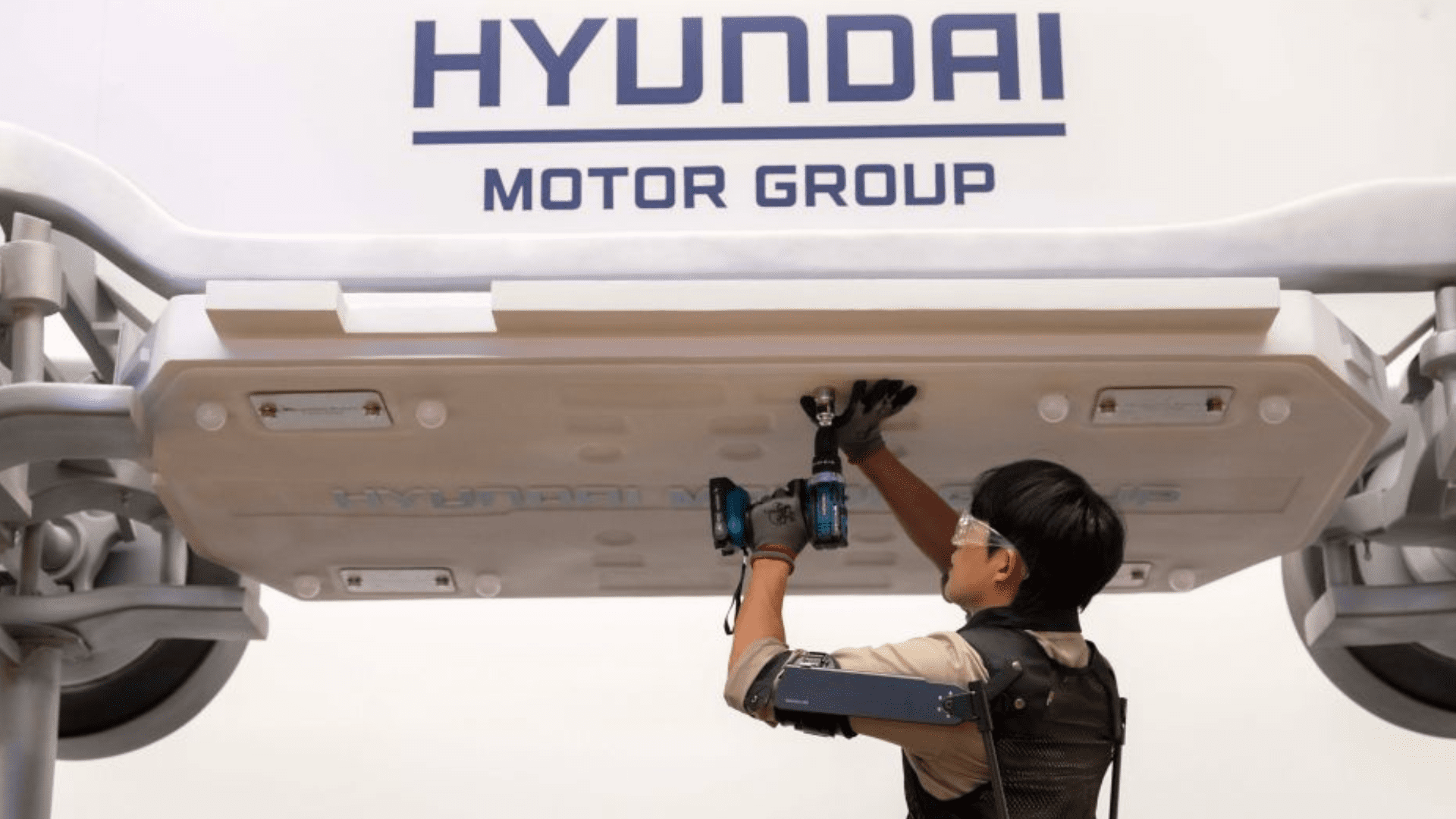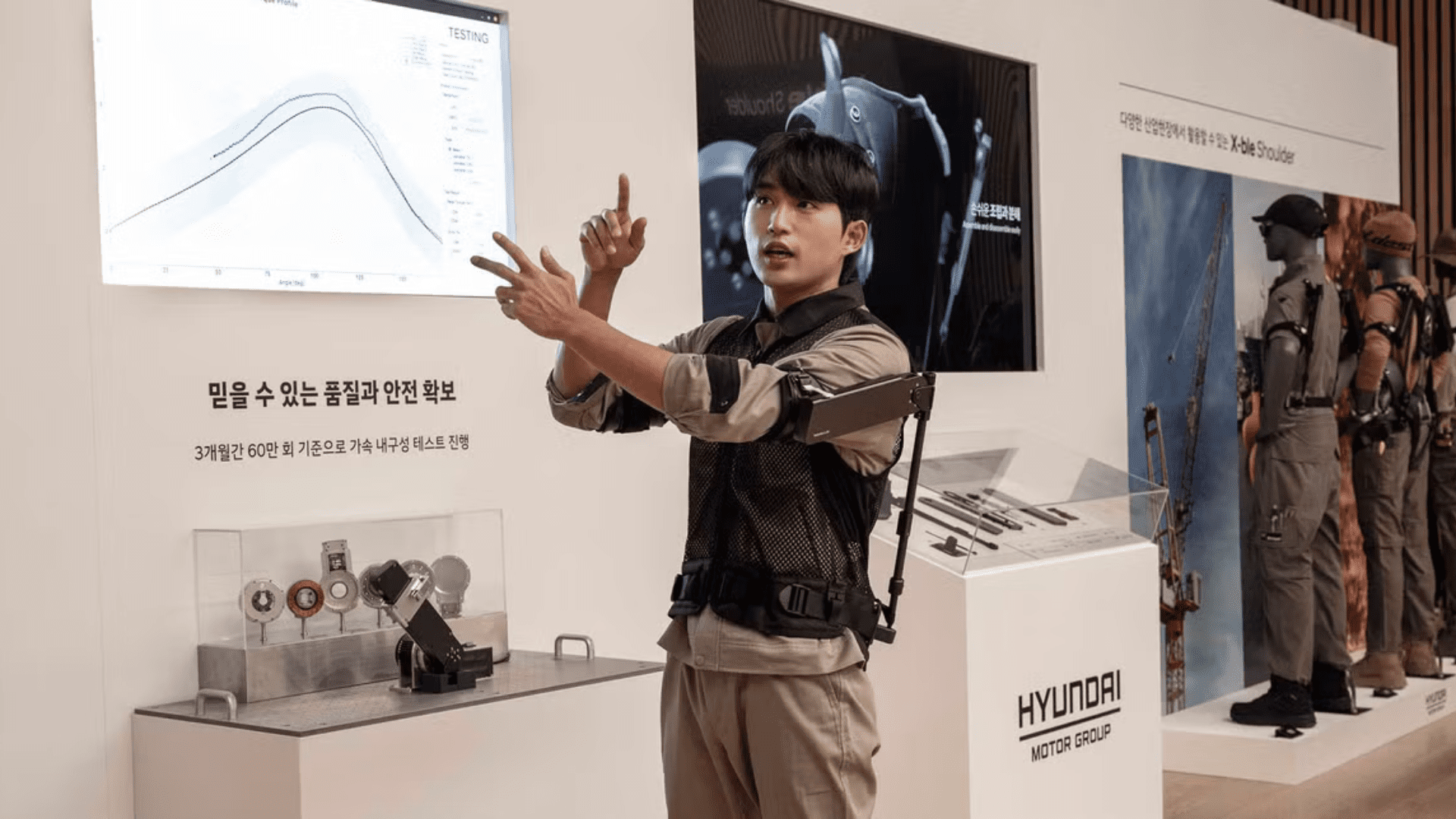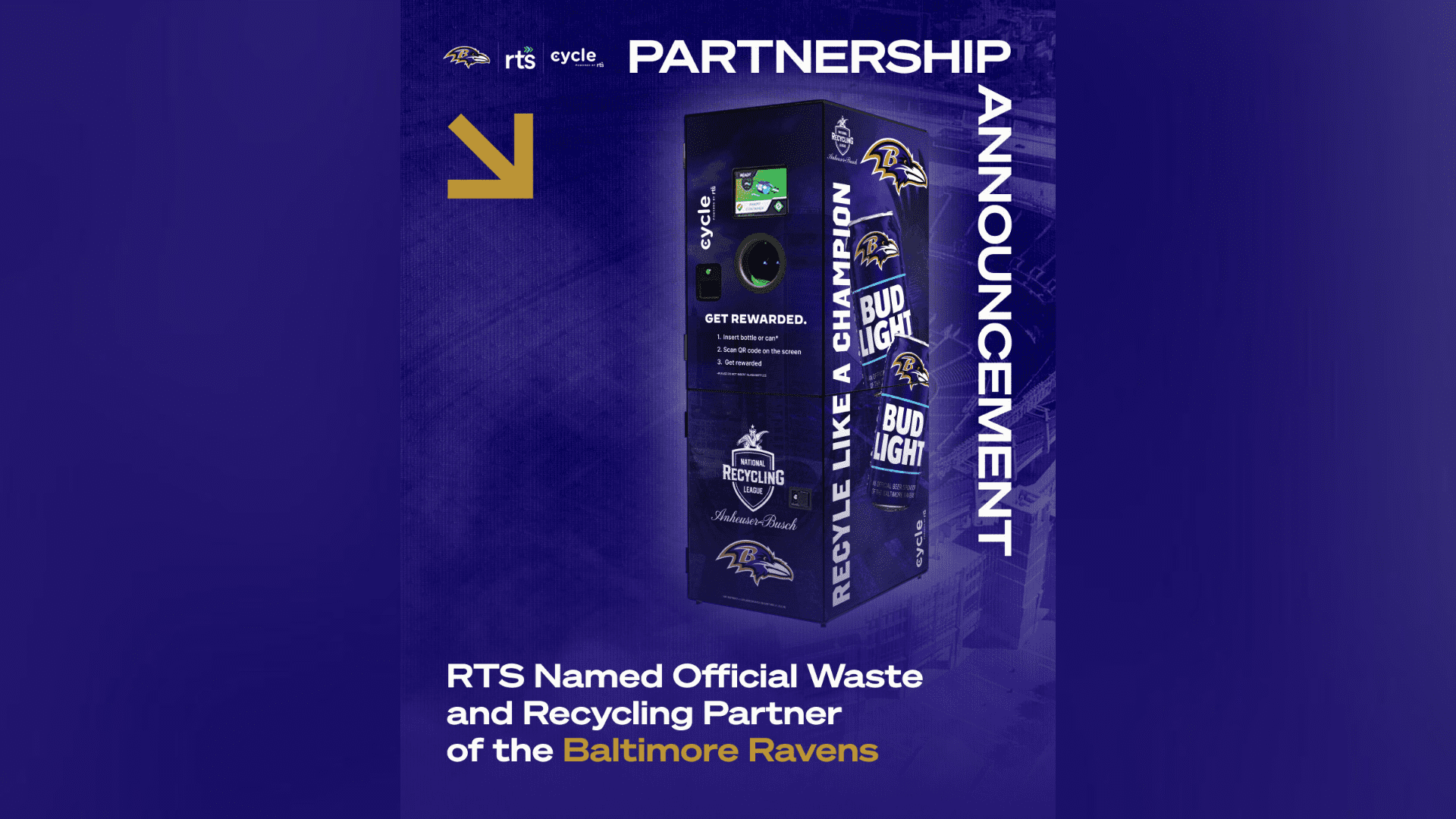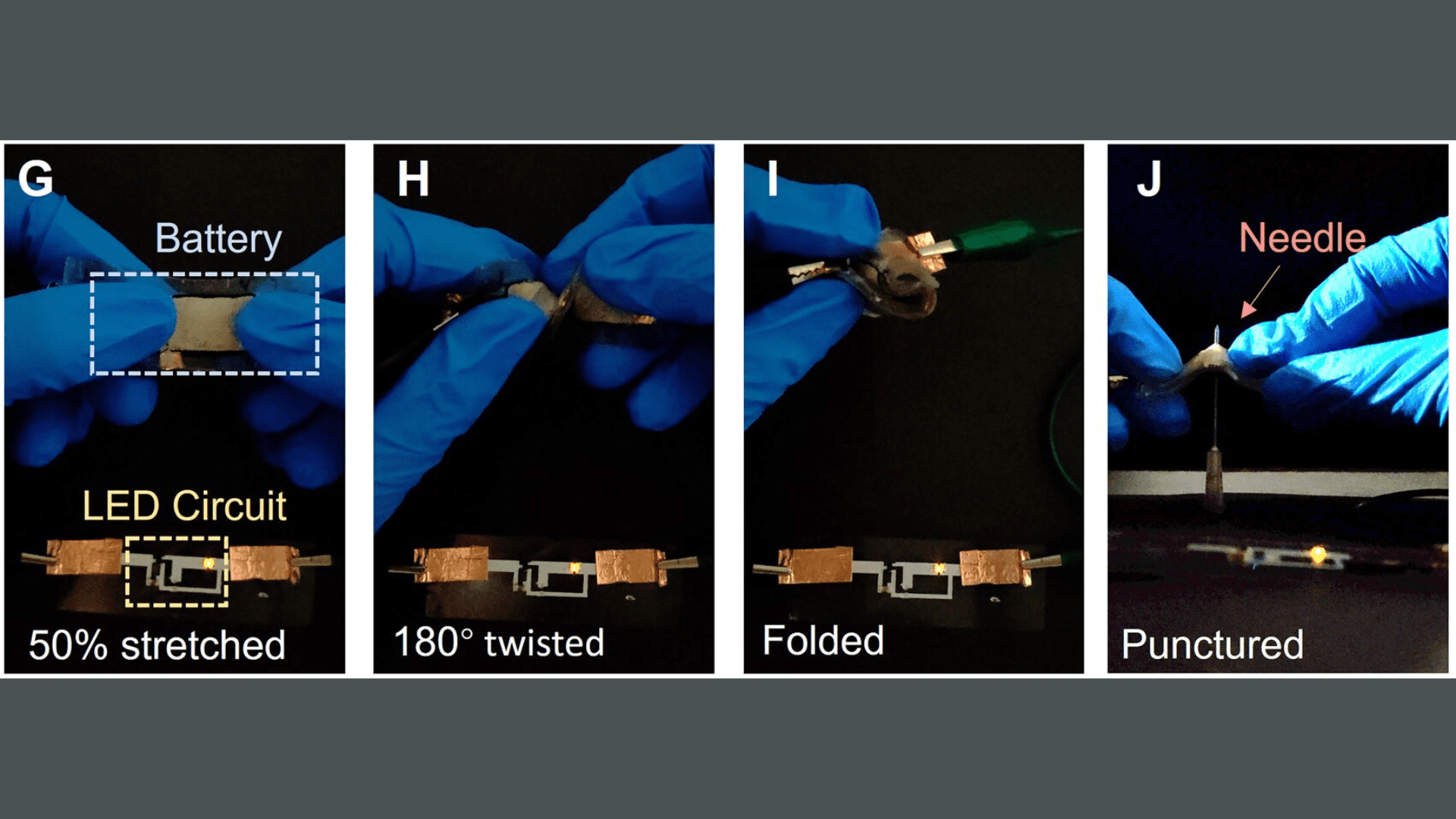Hyundai Motor Company and Kia Corporation have unveiled wearable robotic technology for workers to reduce work-related injuries. The companies call it the “X-ble Shoulder.” According to the company, the wearable robot exoskeleton can increase workers’ efficiency and reduce musculoskeletal injuries.
What is the X-ble Shoulder?

The X-ble Shoulder is the latest wearable technology designed by Hyundai and Kia’s Robotic Labs and the first in the X-ble line. It is intended for “overhead work” when an operator’s arm is raised. According to Hyundai’s statement, the X-ble Shoulder augments the user’s upper arm muscle strength and reduces the burden on the upper musculoskeletal system. In addition to efficiency and injury reduction, the company states it improves comfort and enhances safety.
According to the developers, the “X” in the X-ble brand symbolizes infinite potential, and the “ible” indicates that “anything can be realized.”
Wearable Benefits
Instead of an electrical system, the X-ble Shoulder uses a muscle compensation module to generate assistive force. As a result, the robotic exoskeleton doesn’t need to be charged, making it easier to maintain and manage.
According to Hyundai, the X-ble Shoulder “can reduce shoulder load by up to 60 percent and anterior/lateral deltoid muscle strain by up to 30 percent, improving quality of life for workers.”
In addition, the materials that touch the wearer’s body are impact-resistant to defend against potential injuries at industrial sites. The module is expected to perform around 700,000 folding and unfolding actions yearly in industrial settings.

When Can We Expect the Tech?
Hyundai and Kia are targeting a domestic launch in South Korea in the first half of 2025; the specifics are still being ironed out. The companies plan to gradually expand sales to overseas markets. X-ble Shoulder will start rolling out in Hyundai Motor and Kia’s production and maintenance departments. Overseas market introduction is being targeted in 2026, including Europe and North America, based on domestic market sales experience.
“Going forward, we aim to expand the availability of wearable robots, creating products that work naturally with users to enhance their daily lives,” said Dong Jin Hyun, Vice President and Head of Robotics LAB at Hyundai Motor and Kia. “By pushing technological boundaries, we will make these beneficial products accessible to more people.”







